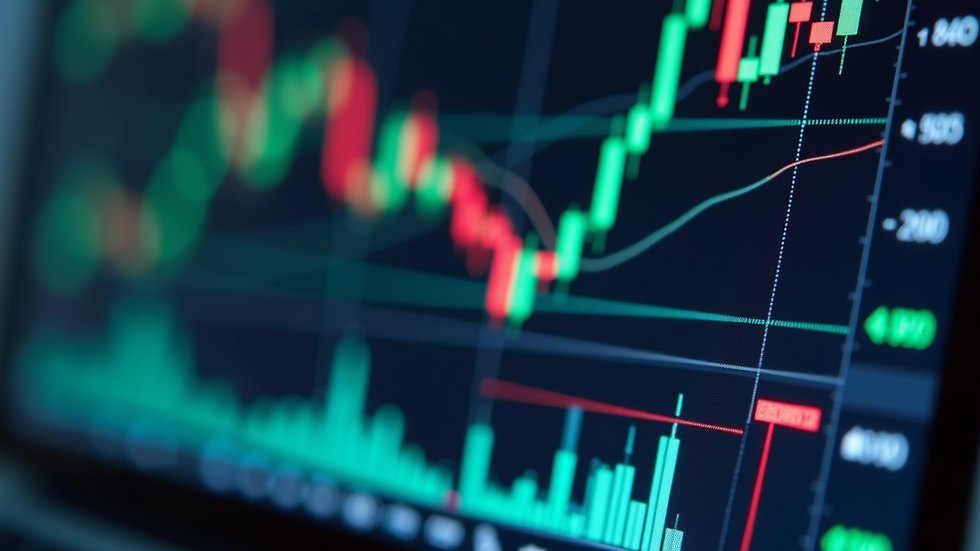Harmonic Patterns: The Art of Balance in Modern Trading
- forex368

- Aug 16, 2023
- 3 min read
In today's fast-paced digital age, where algorithmic trading and AI-driven strategies dominate the financial world, one might wonder about the relevance of traditional tools. Yet, as is the case with harmonic patterns, old-world wisdom often weaves seamlessly into new-world technology.
Their timeless geometry continues to resonate amidst the electronic heartbeats of online trading platforms, helping both novice investors and Wall Street gurus navigate market complexities. As digital currencies rise and global markets interconnect even more tightly, understanding the intricate ballet of harmonic patterns is ever crucial. They're not just echoes of the past; they're blueprints for tomorrow.

Harmonic Patterns: An Ancient Map with Contemporary Relevance
Gartley, Butterfly, Bat, and Crab patterns have intrigued traders for decades, each representing unique geometric movements in price charts.
1. Gartley: Often resembles "M" or "W" shapes. For instance, a trader might spot an emerging "M" shape on a stock's chart. If other indicators align, this could prompt a short-sell at the pattern's peak, anticipating a subsequent downturn.

2. Butterfly: Famed for its sharp price reversals. Forex traders, perhaps influenced by Kathy Lien's methodologies, could identify a potential Butterfly formation and, once confirmed, decide to take a long or short position based on the pattern's direction.

3. Bat: Revered in forex circles for its reliance on Fibonacci retracement levels. A trader might spot a Bat pattern on a currency pair, and if it coincides with a surge in trading volume, this might solidify the expectation of a price reversal upon the pattern's completion.

4. Crab: Known for its potential to predict price consolidations. Institutional investors might deploy this pattern to refine entry and exit strategies, capitalising on forecasted highs and lows.

Decoding Patterns for Practical Application
Identifying a pattern is just one step. It's in their application where traders unlock their true potential.
Example: Consider a trader observing a Gartley pattern unfolding on a tech stock like Apple. As the pattern nears completion, they might strategically set a stop-limit order just below the final point, predicting a subsequent rise in price.
Aligning Harmonics with Fibonacci Sequences
Paul Tudor Jones famously used Fibonacci sequences to foresee the 1987 market crash. Modern traders often align Fibonacci retracement levels within harmonic patterns, such as the Bat, to refine entry and exit points.
Confluence Zones: Enhancing Predictive Power
Renowned trader Linda Raschke would likely stress the power of combining patterns with other indicators. For example, a Butterfly pattern coinciding with a major moving average and robust trading volume might reinforce the likelihood of an impending price reversal.
Conclusion
The world of trading and investment is undergoing rapid transformation. Blockchain technologies, burgeoning start-ups, and an ever-globalising world economy constantly rewrite the rulebook. But amidst this whirlwind of change, harmonic patterns emerge as an anchor, a constant in the unpredictable storm of market fluctuations. Their time-tested strategies have enabled traders, like the legendary Paul Tudor Jones, to not just survive but thrive in the economic jungle. For contemporary investors, whether you're diving into the vibrant world of NFTs or speculating on emerging market commodities, these patterns can be your compass, guiding you towards more informed decisions. In the blend of ancient wisdom and modern strategy, harmonic patterns remain a beacon for those charting the uncertain waters of 21st-century finance.
Trading and investing carry financial risks and could lead to partial or complete loss of funds. Invest only what you can afford to lose and seek advice from an independent financial advisor if you have doubts about your investment choices.




